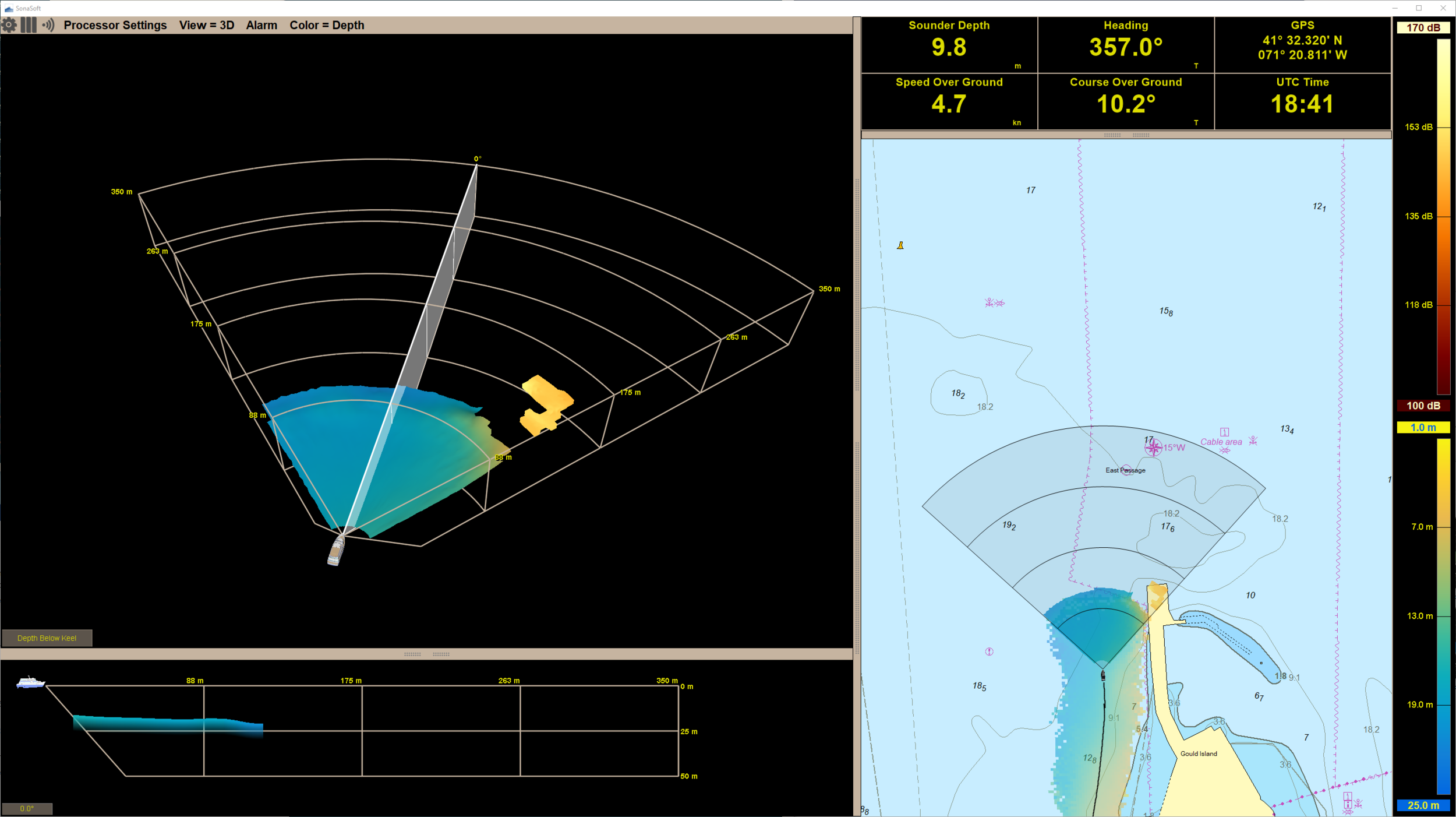Argos 350: Top 3 Questions Answered
By FarSounder
From TradeOnly
FarSounder released its latest version of Forward Looking Sonar, the more compact Argos 350, in early 2020. This new model is designed for vessels 60 feet (18m) to about 130 feet (40m). This model is ideal for mid-sized yachts and high-performance sailing vessels to help them navigate and avoid dangers. This technology is new to this market. Below you will find 3 frequently asked questions that often come up in conversations with potential customers. This will give you a better understanding of the technology and its uses.
1. Am I able to find fish?
This 3D sonar detects out to a maximum of 350m, with both detection of in-water objects and bathymetric bottom views, making it useful to assist in localizing fishing habitats, dive sites, and finding good anchorages. The user can identify shallow bottoms and a variety of objects projecting from the ocean floor including reefs, rock piles, weedbeds, standing timber, and drop-offs. This will help the user make data based decisions while on a fishing excursion.
2. What in-water obstacles does the system see?
Users of this technology can see things like reefs, pinnacles, shallow wrecks, along with in-water dangers such as large debris, shipping containers, icebergs and large marine life.
3. Can I replace the one I have mounted on a hoist with the Argos 350?
The Argos 350 is designed to offer the user flexibility. It is a more compact and lighter transducer than the other models and offers two installation techniques. They can be mounted in a bulb or on a narrow bow with an easy fixed installation. As an alternative, yes, it can be mounted on a hoist in a standard 10-inch diameter sea chest.
It is also important to note the data is shown in a 3D display as well as an overlay on a nautical chart. This provides another layer of situational awareness invaluable to the user. One capability that is shown on the chart overlay is our Local History Mapping™(LHM). With this application, users have the ability to build a 3D map of the seafloor where they’ve recently sailed in the chart overlay view. Navigators will see a color-coded, real-time picture of the sea floor ahead of the vessel, as well as where they have been. Since our sonar has a wide horizontal field-of-view ahead of the vessel, a single pass of an Argos 3D forward-looking sonar with LHM can map a much wider swath of the seafloor than a standard echosounder.
As you can see, there are many notable capabilities with the Argos technology. The ones discussed here are just a few that are of particular interest to this market. Each vessel has their own needs and concerns. Every ship deserves protection from the unknown. There are many potential dangers undetectable with traditional navigation tools. There are three models of Argos sonars to address this reality and fulfill the navigational needs of all types of vessels based on their size and maximum operational speeds. For more information visit www.farsounder.com.


